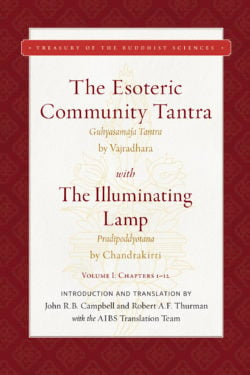John Campbell

John Campbell, PhD, is an independent scholar, accomplished yogin, and translator of Sanskrit and Tibetan texts. His main areas of research are practice systems of yoga and tantra in Indo-Tibetan Buddhism and Hinduism. He is currently writing a book on the commentarial literature of Buddhist and Hindu tantric Buddhist practice systems in late first-millennium India. A former assistant professor of Buddhist studies at the University of Virginia, Charlottesville, among other academic institutions, he teaches graduate and undergraduate courses in the theory and practice of yoga (both contemporary and premodern), Buddhist philosophy in India and Tibet, and surveys of culture and religion in South, East, and Himalayan Asia. He is currently the director of Sanskrit projects for the Asian Classics Input Project, developing the digitization of classical Sanskrit texts on Buddhist and Hindu spiritual sciences. He also advises the research of advanced graduate students in UVA’s renowned Buddhist Studies doctoral program.
Books, Courses & Podcasts
The Esoteric Community Tantra with The Illuminating Lamp
This volume is a translation of the first twelve chapters of The Glorious Esoteric Community Great King of Tantras (Śrī Guhyasamāja Mahā-tantra-rāja), along with the commentary called The Illuminating Lamp (Pradīpoddyotana-nāma-ṭīkā), a commentary in Sanskrit on this tantra by the seventh-century Buddhist intellectual and tantric scholar-adept Chandrakīrti. Regarded by Indo-Tibetan tradition as the esoteric scripture wherein the Buddha revealed in greatest detail the actual psycho-physical process of his enlightenment, The Esoteric Community Tantra is a preeminent text of the class of scriptures known to Indian Buddhist scholar-adepts as great yoga tantra, and later to their Tibetan successors as unexcelled yoga tantra. The Illuminating Lamp presents a system of interpretive guidelines according to which the cryptic meanings of all tantras might be extracted in order to engage the ritual and yogic practices taught therein. Applying its interpretive strategies to the text of The Esoteric Community Tantra, The Illuminating Lamp articulates a synthetic, “vajra vehicle” (vajrayāna) discourse that locates tantric practices and ideals squarely within the cosmological and institutional frameworks of exoteric Mahāyāna Buddhism.

